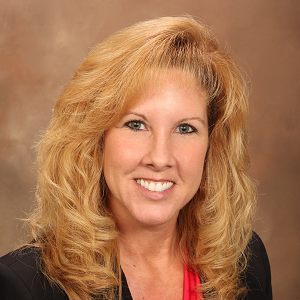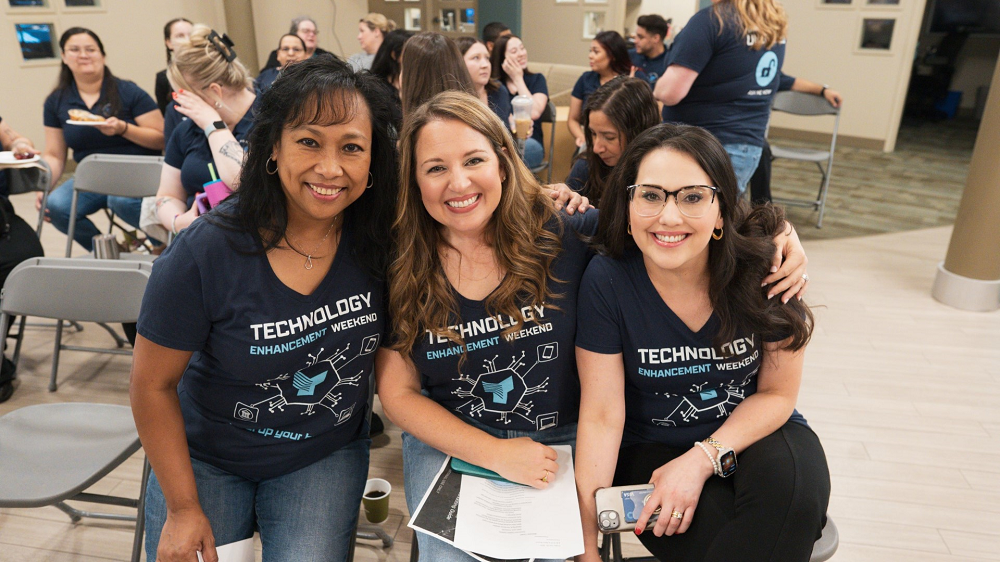The core processing platform has long been the heart of the modern credit union technology stack, and undertaking a heart transplant, so to speak, is never an easy choice. But for Yolo Federal Credit Union ($413.8M, Woodland, CA), the time had clearly arrived.
CU QUICK FACTS
Yolo FCU
HQ: Woodland, CA
ASSETS: $413.8M
MEMBERS: 21,746
BRANCHES: 5
EMPLOYEES: 71
NET WORTH: 11.0%
ROA: 0.69%
The Sacramento Valley cooperative had been running on its UltraData system for more than 40 years but found the venerable legacy platform was not evolving enough to accommodate the credit union’s strategic initiatives. That included expanded mobile and online banking, of course, along with scaling to accommodate a major expansion of Yolo FCU’s field of membership.
In 2023, Yolo FCU — based in the Yolo County seat of Woodland — won NCUA approval to expand from serving just its home county of approximately 216,000 residents to anyone who lives, works, worships, or goes to school in Sacramento, Placer, and El Dorado counties. That adds nearly 2.2 million potential members to a cooperative that currently serves nearly 22,000.
When it announced the expansion in January 2023, Yolo was already well into the process of swapping its core processing from UltraData to Corelation’s KeyStone platform (as well as converting its digital and mobile banking to Alkami.) That year-long process culminated with its go-live weekend in July, and the credit union is now focused on growing its membership and service capabilities along with its ability to make the most of its new technology.
No Hasty Decision

Jene Rawlings, who has been with Yolo since 1989 and at the helm for the past 10 years, says the decision to transition from its reliable workhorse of a core processing system to a new solution was not made in haste. Nor was the selection.
She says Yolo FCU, working with technology consultancy Samaha & Associates, invested four months in thorough research, including multiple core vendor evaluations, interviews, and demonstrations. The Yolo team narrowed its options to a select few before making the final choice, which was ultimately driven by the promise of open architecture, technological tools, and client engagement.
Look Beyond The Software At The Business Itself
When choosing this critical new partner, says Rawlings, it’s crucial to look beyond just the software.
“In addition to considering the features and functionality of a new core, consider how the core vendor’s business is managed, how quickly and efficiently issues are resolved, and how requests for enhancement are handled,” she advises.
Talking to other credit union users beyond the references vendors provide is also a must, she adds. That includes asking specifically about lessons learned, hearing from conversion and support teams about their experience with the transition, and understanding how vendors supported those clients post-conversion.
But that’s not all she advises.
“Unless you have the talent in-house, and maybe even if you do, I strongly recommend partnering with a technology consulting firm who can help support and execute a solid conversion project plan,” the CEO says.
A Technology Transplant In 4 Steps
Yolo’s core conversion involved a series of critical phases. Here’s how it broke down the process.
- Project Selection And Planning: The project began by selecting a technology consultant partner and choosing the core and digital banking platforms. The overall project timeline was set at 12 months.
- Data Cleanup And Mapping: Yolo dedicated significant effort to cleaning up the data, particularly considering its extensive history with the UltraData core system.
- Interface Testing And Training: The months leading up to the go-live date focused on finalizing configurations, testing interfaces, staff training, and parallel processing.
- Mock Conversions: Yolo conducted two mock conversions in advance of the July 2023 go-live date.
Setting A Date And Focusing On Data
Once Yolo selected a core processor and digital banking provider, it set a 12-month project timeline. Rawlings said the credit union spent the first couple of months discussing existing and intended hardware, continuing and new ancillary vendors, and learning about the chosen system.
Then, the next few months involved a lot of work on system configuration, data mapping, and database cleanup, the Yolo chief executive says.
“Having been on UltraData for more than 40 years, the database cleanup was a huge job,” Rawlings says. “We involved a team of people from throughout the organization, along with an industry expert in data management services who was very familiar with the UltraData core system and with us.”
That brought Yolo to the project timeline’s second half, comprising continued mapping and configuration, testing and validation, parallel processing, training subject-matter experts (SMEs) and in-house trainers, and then training of the staff itself.
In mid-March and again in early May, management ran everyone through a mock conversion in advance of the July 17 launch date.
“We then had a dress rehearsal weekend the month prior to our go-live date,” Rawlings says. “It went very well.”
Going Live And Delivering
Yolo FCU was a hive of activity leading up to the go-live date, including keeping members and staff up to date about the coming shift. Along with the technology itself, communication was a critical piece of the project’s ultimate success, the cooperative’s CEO says.
Members began to get word about the upcoming conversion a few months before launch via email, in-branch notifications, social media, and mailings. Staff also wore T-shirts announcing and celebrating the upcoming “Technology Enhancement” weekend.

But the effort to boost team morale went way beyond t-shirts.
“Building up to the go-live weekend was a lot of work, and we relied on staff from across the organization to assist where they could,” Rawlings says. “It was all hands on deck, and our staff really supported our efforts. We celebrated and recognized all the hard work that allowed us to be as prepared as possible. We had lots of snacks, catered lunches, and celebrations of milestones along the way to keep the momentum and enthusiasm.”
When the go-live date came, YOLO FCU was ready.
“We informed members we would be closed at 2 p.m. on Friday and would remain closed through Monday,” Rawlings says. “However, we reopened mid-day with a soft reopening on Monday. Our strategy was to under-promise and overdeliver.”
Planning And Communications Keep Hiccups At Bay
Of course, such a complex endeavor was always going to include some hiccups. For instance, says Rawlings, staff underestimated foot traffic and call volumes during the first two weeks after going live.
“Luckily, we had a plan in place to support our front-line staff and contact center,” she says. “Wait times were definitely a lot longer than usual — sometimes in excess of an hour — but we had the ability for members to select a call back or send an email to a dedicated email address.”
Yolo’s marketing team, SMEs, tech team, and even Rawlings herself pitched in to respond to member emails and conduct outreach.
“The only unexpected challenge we faced in that regard was the underperformance of one of our ancillary vendors — unrelated to but integrated with the KeyStone core system,” Rawlings says. “We escalated our complaints, and those issues were resolved, although it took an additional two months and quite a few workarounds.”
3 Ways To Ensure A Successful Core Conversion
Yolo CEO Jenee Rawlings offers three best practices to implement during a core platform conversion.
- Choose The Right Leaders: Choose leaders with a combination of talents to lead the project internally, recognizing that project management is a specific skill. Rawlings chose two co-leaders with decades of experience: one in IT and operations, the other in lending, operations, audit and compliance, and risk management.
- Over-Communicate: There’s no such thing as over-communicating during a significant project. Keep members and staff well-informed.
- Escalate Problems: Support front-line staff and have a plan in place to address issues that might take more than a few minutes to resolve.
The Right People In The Right Places
Rawlings says there are three keys to a successful conversion: Communication, communication, communication.
“There can never be too much member or staff communication when undergoing such a monumental project,” she says. “Our marketing team did a fabulous job of developing and implementing a communication strategy for our members and our staff.”
Critical, too, is having the right people in the right places. That began with recognizing project management is a specific skill not everyone possesses.
“One of the first and best decisions I made was in selecting the project team,” Rawlings says.
Beyond the executives who were involved, Rawlings selected two co-leaders to help keep the credit union organized and on track.
“One had a background in both operations and IT, and with over 20 years tenure, really understood the UltraData core — the good and the bad — and the complicated maze of integrated vendor partnerships,” she says. “The other also had an operational and lending background but over a decade in audit, compliance, and risk management. The combination of talent was a big part of why this conversion project was so successful.”
Immediate Improvements Now, More To Come
Yolo has already seen significant improvements from its new core, including ease of navigation and system controls, integrating other technology such as its ITMs, and more robust relationship pricing.
“We’re just beginning to explore all the additional functionality and customization now available to us,” Rawlings says. “We’ll be evaluating how to leverage the customized workflows, system automation, and other new features like dashboards to reduce friction, streamline processes, and improve service to members.”
Members And Staff: Heard, Understood, Supported
As for the member experience, Rawlings says, “Since we’re only 90 days post-conversion, I don’t know if we can fully evaluate or appreciate the impact on the member experience or satisfaction. I am proud to say that even with the complexity and scale of this conversion project … our members did not experience any significant down time.”
She adds that carefully vetting vendors, effective project management, and careful collaboration among vendors and within the credit union are all critical.
“It’s important not to underestimate the impact on staff — from the newest to the most tenured employees,” she says.
That’s because while change can be exciting, it can also cause anxiety, which can result in resistance.
“We spent a lot of time and effort helping staff across the organization to feel in the know and to be heard, understood, and supported,” Rawlings says.
Don’t Stop Here! Learn how you can gain access to our award-winning publications, intuitive benchmarking tools, collaborative networks, and more.